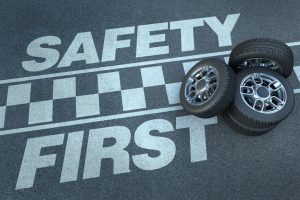Trailers Direct have been helping Australians move, work and play for over 20 years. Our knowledge, expertise and quality control deliver high quality trailers that will stand the test of time.
All our trailers conform to stringent Australian Design Regulations (ADR) and Australian Safety Standards (AS), as well as the Motor Vehicle Standards ACT 1989.
Your safety is very important to us and we are always happy to answer any queries you might have about trailer safety and towing.
Here are some helpful tips to get you started.
Definitions of what is stamped on the trailer compliance plate of your boat trailer or trailer (often called the VIN plate):
ATM (Aggregate Trailer Mass) – This is the weight on all the wheel, plus the ball weight, plus your personal load, including water, gas and any accessories you fit. The total of all these weights is the Aggregate Trailer Mass or ATM.
GTM (Gross Trailer Mass) – This is the weight on all the wheels, plus your personal load, plus water, gas and any accessories you fit. The total of all these weights is the Gross Trailer Mass or GTM.
TARE (Tare Mass) – This is the unladen weight (self-weight or kerb weight) of the trailer.
CALCULATING HOW MUCH YOU CAN CARRY
To calculate the maximum load you can safely carry in your trailer or boat trailer, take the TARE (as stamped on the trailer plate) from the ATM or GVM (as stamped on the trailer plate). The ATM or GVM minus the TARE equals the maximum load your trailer or boat trailer can carry.
THINGS TO CHECK BEFORE YOU TOW
Check the vehicle that is going to be towing the trailer has the appropriate towing capacity for the trailer being attached.
Check the trailer is correctly attached to your towing vehicle: Position vehicle and trailer so that the tow ball is underneath the cup of the trailer hitch. Lower the trailer hitch until the cup fully covers the tow ball. Lock in place with safety/security latch. Attach the safety chain using a D shackle, ensuring it is clear of the road surface. Attach trailer lights to vehicle.
- Check wheel nuts are secure and retighten regularly.
- Check the lights are working.
- Check your tyres are properly inflated.
- Check that you have a spare wheel and wheel wrench.
LEARNING TO TOW A TRAILER
If you have never towed a trailer before, there are some points you should be aware of.
REVERSING: This can take some getting used to so, when you begin, ask a friend or family member to help by giving directions. A good place to practice is an empty car park.
LENGTH: Be aware of the combined length and width of your vehicle and trailer, and allow extra space when overtaking, turning or parking.
BRAKING: Your braking capacity will be affected by the weight of the trailer and the load, so leave plenty of space between you and the next vehicle, and remember to brake early and gently to avoid skidding.
SECURING YOUR LOAD
As the driver, it is your legal responsibility to ensure your trailer is properly hitched, and that your load is secure.
Load restraint is not just about making sure the load does not come off, it is also about making sure the load does not shift in a way that makes the vehicle unstable.
Your load must not project from your vehicle in a way that is likely to injure a person, obstruct the path of other drivers or pedestrians, or damage another vehicle.
Loads must not cover number plates, lights and reflectors.
Safe Towing Guides are available for some States as follows:
Queensland: www.tmr.qld.gov.au/-/media/Safety/Vehicle-standards-and-modifications/Loads-and-towing/Safe-towing/Safe_towing_guide.pdf
NSW: http://www.rms.nsw.gov.au/roads/safety-rules/road-rules/towing
WA: http://www.transport.wa.gov.au/mediaFiles/licensing/LBU_VS_IB_107.pdf





